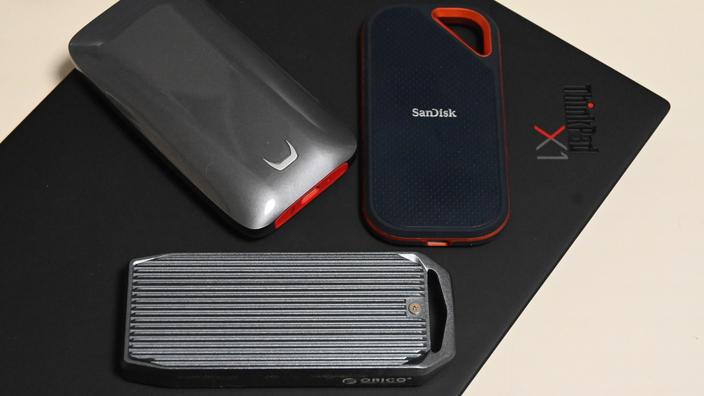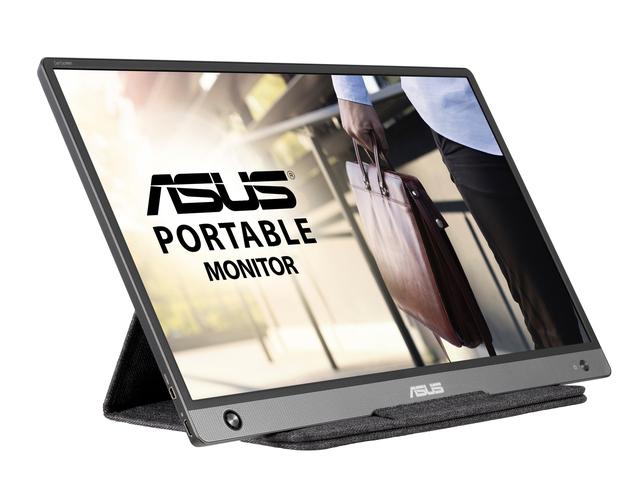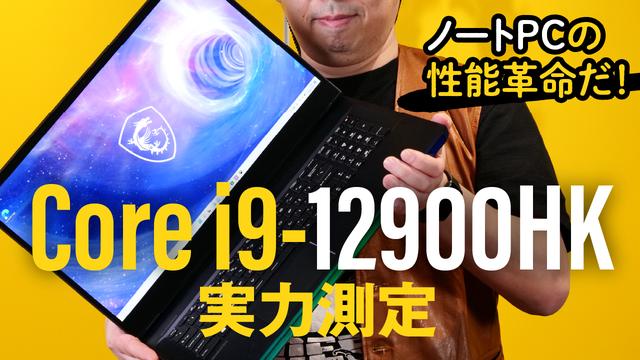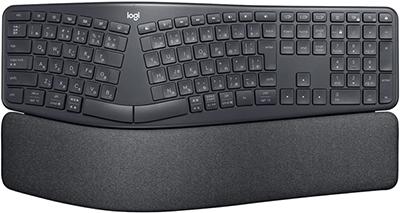What are the advantages of "USB Type-C display"? "Let's check it out!" [January 2022 version]
Recently, there is an increasing trend in the number of models equipped with a "USB Type-C (USB-C) terminal" for displays (monitors) that are mainly used with computers. Displays with USB terminals have existed for a long time, but displays with USB Type-C terminals have advantages that conventional "displays with USB terminals" do not have.
In this article, we will review the advantages of displays with USB Type-C terminals (USB Type-C displays) and introduce recommended products as of January 30, 2022. .
Disclaimer
About the USB standard
Of the USB (universal serial bus) communication standards, the new standards from "USB 3.0" to "USB 3.2" The name of the old standard was changed at the time of formulation. This article follows the latest rules as of January 2022.
However, depending on the manufacturer and mail order site, there are times when specs are listed under the name of the old standard in order to avoid confusion. Please refer to the correspondence between old and new standard names below.
Display connection
This article does not guarantee that all USB Type-C displays can be connected to all USB Type-C compatible devices. Please read it as a reference for how to choose.
What are the advantages of a USB Type-C display?What exactly is a “USB Type-C port”?
The USB terminal is familiar not only on computers, but also on smartphones and tablets, but it can be roughly divided into three types (I will omit the explanation of the USB communication standard and the size of the terminal/connector).
The USB Type-C terminal can be used for both the parent and child devices, and it has a symmetrical shape vertically and horizontally, and is more compact than the conventional Type-A/Type-B terminals. I have it. Simply put, it is a great advantage that you can connect without thinking about the orientation and direction of the cable.
In the USB Type-C terminal, an "Alternate Mode" is defined in which a signal of a different standard is passed through part of the signal line. The USB Type-C display introduced this time utilizes this Alternate Mode to provide high convenience.
The USB Type-C terminal is vertically and horizontally symmetrical, so you can connect without worrying about the orientation or direction of the connector (Source: USB-IF, PDF format)USB Type-C Of course, the connector that corresponds to the terminal is also vertically and horizontally symmetrical (Source: USB-IF, PDF format)The advantage of a USB Type-C display is "one cable"
< p> Basically, a USB Type-C display has a USB Type-C terminal that supports "DisplayPort Alternate Mode".DisplayPort Alternate Mode is a mechanism that transmits video signals of the "DisplayPort" standard in Alternate Mode of the USB Type-C terminal. Video signal standards include HDMI, which is also used in TVs, but DisplayPort has the following advantages.
(*1) Both the video output device and the display must be compatible.
In fact, HDMI also supports Alternate Mode, and the standard has been established. However, from the viewpoint of ease of signal conversion, most devices (computers, smartphones and tablets) that can output video from the USB Type-C terminal use DisplayPort Alternate Mode.
The USB Type-C terminal of the USB Type-C display basically supports video input via DisplayPort Alternate Mode. If the display has DisplayPort output and the device from which the video is output is also compatible, you can connect another DisplayPort compatible display in a daisy chain as shown in the photo (From an article by ITmedia PC USER)< p> The story seems to be a little sidetracked, but the advantage of the USB Type-C display is that it can be connected with a single USB Type-C cable. Since the advantages are slightly different between stationary and mobile displays, we will introduce them separately.Stationary type: Advantages of power supply to devices + simplification of device connection
Many stationary type USB Type-C displays also support power supply to connected devices. increase. Simply put, the display replaces the AC adapter (charger) (notes will be discussed later).

Furthermore , If you have a USB Type-C display with a USB hub function and a wired LAN port, you can connect a USB device or wired LAN cable to the display side, and you can connect to USB peripherals and networks at the same time as video and power. You can do it. This eliminates the need to reconnect multiple cables.
The multifunctional USB Type-C display is equipped with a USB hub function and a wired LAN port. If you connect USB peripherals and wired LAN cables here, you can connect "everything" at once just by connecting a USB Type-C cable (From an article by ITmedia PC USER)Mobile type: Dedicated Many models can be used without a power source
Most mobile USB Type-C displays work by receiving power from the USB Type-C port of the connected device. That means you don't have to carry around an AC adapter just for the display.
Some displays also support "power pass-through", and by connecting in the order AC adapter → display → device (computer, smartphone or tablet), both the display and the device can be powered. Especially when using it with a personal computer, I would like to check whether it supports power pass-through.
Most mobile USB Type-C displays are powered by the device. The fact that it can be used without a dedicated power supply is a big advantage (photo is "HP E14 G4", source: Japan HP)Points to check to make the most of the advantage
USB Type-C displays have many advantages, but there are points to check for each display, device, and USB Type-C cable in order to take advantage of the advantages. I will explain what you should pay special attention to.
Display: Check USB PD compatibility and maximum current carefully
As mentioned earlier, USB Type-C displays basically have a USB Type-C terminal that supports DisplayPort Alternate Mode. . On the other hand, the power output from this terminal varies greatly depending on the model.
When connecting to a laptop computer (or some small desktop computers), power cannot be supplied unless the USB Type-C terminal on the display side supports "USB PD (Power Delivery)". Also, even if USB PD is supported, power will not be supplied if it does not support the current (wattage) required by the device.
If you aim to "connect everything with a single cable", please check the power supply specifications of the USB Type-C terminal on the display side. You should be able to check detailed specifications on the website, in catalogs, and in instruction manuals.
If you want to connect USB peripherals and wired LAN all at once, check the presence or absence of various terminals. In the case of a mobile type USB Type-C display, if there is a description of "with USB hub function", you can use the USB peripheral device by connecting in the same order as the power pass-through: USB peripheral → display → device. .
In the case of a stationary USB Type-C display, carefully check whether the USB Type-C port supports power output by USB PD, and if so, what is the maximum output ( The image is the specifications of EIZO "FlexScan EV2480", Source: EIZO)If you have a mobile type USB Type-C display, check if the power pass-through function supports USB PD. If so, I'd also like to check what happens to the current after passing through the display (image is Dell Technologies "C1422H" instruction manual, source: Dell Technologies)Device : Carefully check the specifications of the USB Type-C terminal
When connecting a device with a USB Type-C terminal to a USB Type-C display, the device's USB Type-C terminal supports at least DisplayPort Alternate Mode Must have. Please note that it is not always possible to output video if there is a USB Type-C terminal.
Especially when using a laptop computer, if you want to receive power from the display, check whether the device's USB Type-C port supports USB PD and what the minimum required current is. please. Just like with video output, the presence of a USB Type-C port does not necessarily guarantee that power will be supplied, so be careful.
In some cases, it may not be possible to tell what functions the USB Type-C terminals of laptops, smartphones, and tablets support. Also check whether video output is possible, and if power is supplied from the display, whether it supports USB PD (Image is NEC personal computer "LAVIE Pro Mobile", Source: NEC Personal computer)Cable: Prepare a USB 3.2 Gen 1 or later Type-C cable!
The cable that connects the display and the device should ideally be the one that came with the display. This is because you can avoid unnecessary troubles.
If the USB Type-C cable is sold separately, or if you want to repurchase it, please select a USB Type-C cable that supports USB 3.2 Gen 1 or later standards. A USB 2.0 Type-C cable does not have enough signal lines to exchange video signals.
In addition, when supplying power with USB PD, be sure to select one that clearly states that it supports USB PD. If it is not specified, trouble may occur when a large current is applied.
If you want to transmit video using a USB Type-C cable, prepare a USB Type-C cable that supports at least USB 3.2 Gen 1 or later standards (the image is "Amazon Basic USB Cable (USB 3.1 Gen 1 Type-C)”) Check the details of “Amazon Basic USB Cable (USB 3.1 Gen 1 Type-C)” on Amazon! If you also want to supply power with USB PD, prepare a USB 3.2 Gen 1 or later USB TYPE-C cable that clearly states that it supports USB PD (The image is from Computer Case Japan "CLIENA JCB- PD1C9-BK") Check out the details of "CLIENA JCB-PD1C9-BK" on Amazon!This is the recommended USB Type-C display! (Stationary version)
Based on the above, we will introduce recommended USB Type-C displays. Let's start with the stationary type.
GW2485TC (BenQ)
A 23.8-inch USB Type-C display for business sold by Taiwan BenQ. Body color is black only.
The feature is that it is highly functional for the price, and in addition to having a built-in microphone that can be used for web conferences etc. (web camera sold separately), it also supports DisplayPort daisy chain connection. A stand with a pivot mechanism is also included.
[Main specifications]
Modern MD271P (MSI)
Sold by MSI Taiwan This is a 27-inch USB Type-C display for businesses that are doing business. Body color can be selected from black and white (white is limited to Amazon).
The stand is equipped with a "pivot mechanism" that rotates the screen vertically, which is very useful for browsing websites and texts. Recommended for those who want a USB Type-C display with an affordable and large screen!
[Main specifications]
S2722DC (Dell Technologies)
This is a 27-inch USB Type-C display for home use sold by Dell Technologies. Body color is black only.
This model has specifications that cover a wide range from business to hobby, and is also compatible with AMD's display synchronization technology "FreeSync". It also has a USB hub function and comes with a stand with a pivot mechanism. The warranty is as long as 3 years, and it also supports the "premium panel replacement warranty" against missing pixels.
[Main specifications]
27UL850 (LG Electronics)
A 27-inch USB Type-C display for home use sold by LG Electronics. Body color is white only.
This model is equipped with a 4K display, and is characterized by its color reproducibility being enhanced by performing color calibration at the time of shipment from the factory. The HDMI terminal conforms to version 2.0, and you can enjoy games in 4K by connecting PlayStation 5 (PS5).
[Main specifications]
This is the recommended USB Type-C display! (Mobile version)
Next, we will introduce recommended products for mobile type USB Type-C displays.
EX-LDC161DBM (IO DATA DEVICE)
IO DATA DEVICE's 15.6-inch mobile USB Type-C display.
Comes with a stand that stands on its own, so it can be installed anywhere. It also has a Mini HDMI input terminal and a speaker, so you can connect it to a video device with a general HDMI output such as a game console (cable is also included).
[Main specifications]
(*2) AC adapter is not required when video is input from the USB Type-C port (if the power supply capacity is insufficient) , connect the AC adapter to the available USB Type-C port)
(Source: Amazon)ZenScreen MB14AC (ASUS)
14-inch mobile display from ASUS JAPAN.
The main feature of this display is that it can be connected to various computers. It can be connected to a computer with a USB Type-A terminal only, as well as a computer with a USB Type-C terminal that does not support DisplayPort Alternate Mode (*3). In any case, the power saving that works with the power supply from the PC itself is also attractive.
Using the included display cover makes it easy to place vertically, and if it's a Windows computer, it's possible to automatically rotate the screen according to the orientation of the main unit. Since the back has a screw thread that can fix a camera tripod, it is also attractive that you can choose the installation location more flexibly than a general mobile display.
(*3) Use "DisplayLink" to connect to a computer that does not support DisplayPort Alternate Mode (the device driver can be downloaded from the support site). When connecting, please use a USB port that supports USB 3.2 Gen 1 or later
[Main specifications]
PM161Qbu (Acer)
This is a 15.6-inch mobile display from Japan's Acer.
This display achieves an affordable price by simply specializing in video input and display with USB Type-C. A carrying bag is also included, making it easy to take along on business trips and trips.
[Main specifications]
(*4) If you cannot get enough power from the USB Type-C port, connect the cable to the Micro USB port on the main unit. Connect to provide additional power
(Source: Amazon)Check details on Amazon!





![[July 6 and 7] DX realized by content cloud, advanced platform for business transformation](https://website-google-hk.oss-cn-hongkong.aliyuncs.com/drawing/article_results_9/2022/3/9/6bbafe438d78271513761788166cbf94_0.jpeg)

